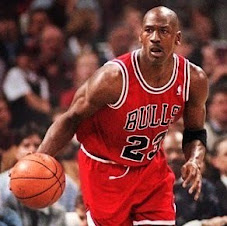 Movie moguls are calling it the "X-Box Factor" as young men stay in to play increasingly sophisticated video games, while women are flocking to the cinema.
Movie moguls are calling it the "X-Box Factor" as young men stay in to play increasingly sophisticated video games, while women are flocking to the cinema.By Philip Sherwell, The Daily Telegraph
20 Feb 2010
They will not be in line for any Oscars. But to the surprise of studios and disdain of reviewers, “chick flicks” often reliant on sappy storylines have emerged as Hollywood’s unexpected new celluloid success story.
Valentine’s Day, a film as packed with stars as it is devoid of plot, stormed to number one at the US box office when it opened last weekend – taking more than $56 million (£36m) despite dreadful reviews.
A week earlier, Dear John, a romantic number without big name buzz and only slightly better critical reception ousted the James Cameron hit Avatar from top spot.
Yet the fact that near every film to top the box office for more than three months has been female-focused does not reflect a growing enthusiasm among women for films: instead, it marks what Hollywood film moguls now refer to as the “Xbox” factor, in which young men and teenage boys are increasingly prefer playing sophisticated video games to watching movies.
“A lot of young males are spending much more time on the internet, games and UFC [ultimate fighting],” Peter Guber, chairman of Mandalay Pictures production company and former studio chief at Sony Pictures, told The Sunday Telegraph.
“They have not abandoned movies but they have diminished as a target, while the female audience has remained robust.”
Mr Guber, who has female-friendly films such as The Colour Purple and Flashdance to his name, said that women “have often been an underserved audience”, but “if you speak to the heart with a powerful emotional narrative, you will pull in a strong female audience”.
The shift in the balance of gender power has accompanied the explosion in the male-dominated video game market – worth about $21 billion in the US in 2008.
The same year, American box offices takings were nearly $10 billion, with another $22 billion spent on DVDs.
The predominantly male bosses of the film industry are now working out how to develop the lucrative new demographic in their business after hitting on a winning formula apparently by accident.
“Nobody saw it coming. Why not? One simple reason: Hollywood still doesn’t understand how to market to women,” noted Amanda Sloane Murray, a Los Angeles-based script consultant, in a commentary for The Wrap website that covers the entertainment industry.
The breakdown of the audiences for Dear John is striking. Some 84 per cent of the moviegoers were female and 64 per cent were under 25.
There was a similar mix for Valentine’s Day, which had the added benefit of an all-star cast that included Julia Roberts, Jennifer Garner, Jessica Alba, Shirley MacLaine, Anne Hathaway, Ashton Kutcher, Jamie Foxx and Bradley Cooper.
They were certainly not turning out in such droves as a result of the reviews.
The Rotten Tomatoes website, which aggregates reviews in America and Britain, recorded just 26 positive write-ups out of 151 for Valentine’s Day – or a dismal 17 per cent on its “tomatometer”.
Dear John fared slightly better with a 28 per cent rating – the same score as Twilight Saga.
“Valentine’s Day is being marketed as a date movie,” noted Roger Ebert, the doyen of US film critics.
“I think it’s more of a First-Date Movie. If your date likes it, do not date that person again. And if you like it, there may not be a second date.”
Plenty of others were even harsher. But fans of the film were spreading the word via Twitter and text message rather than reading such uncompromising commentary.
The result for Dear John was a movie that brought in nearly twice as much as the industry had expected.
“Following a weekend like this, studio executives inevitably walk into their Monday morning meetings and exchange confused looks,” said Miss Murray. “They talk about the success of the latest chick flick, shrug, chalk it up to serendipity and move on.
“Women are not one bloc of moviegoers whose needs can be pre-fitted into a predictable movie mould. Give us good movies, sexy movies, genuinely romantic movies. If you make them, we will come.”
Martha Lauzen, executive director of the Centre for the Study of Women in Television and Film, reached a similar conclusion about out-of-touch male executives.
“There is a lot of pent-up demand for films featuring female protagonists,” she told The Sunday Telegraph. “For years, female audiences have been starved of the chance to see their lives portrayed on the big screen.
“The studios are run by men who just don’t get it when they see a female lead. For too long, the conventional wisdom among these male bosses has been that women don’t go to films featuring women for too long. Even when a movie like Sex And The City was a success, they thought it was a fluke.”
Of course, there have always been “chick flicks” and simply targeting female audiences is not an automatic guarantee of success. But studio bosses are now changing their attitudes.
“For as long as anyone can remember, it’s been taken as a given that the movie industry’s holy grail is 13-year-old boys,” said Nicole Laporte, who covers the business for The Daily Beast.
“Hence: Transformers, Iron Man, Ninja Assassin.”
“But the jaw-dropping success of films such as Twilight, High School Musical, and now, Dear John are proving that these days, it's girls who rule the entertainment industry.
"The movies may be alternately cheesy and sappy, and the scripts laughable, but teen and tween girls don’t care.”






.jpg)





